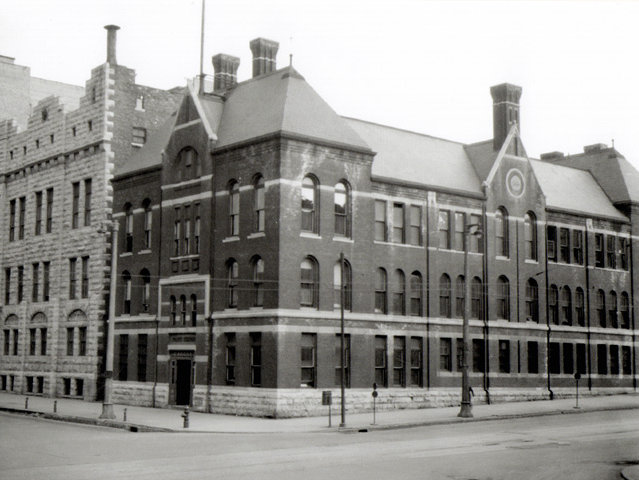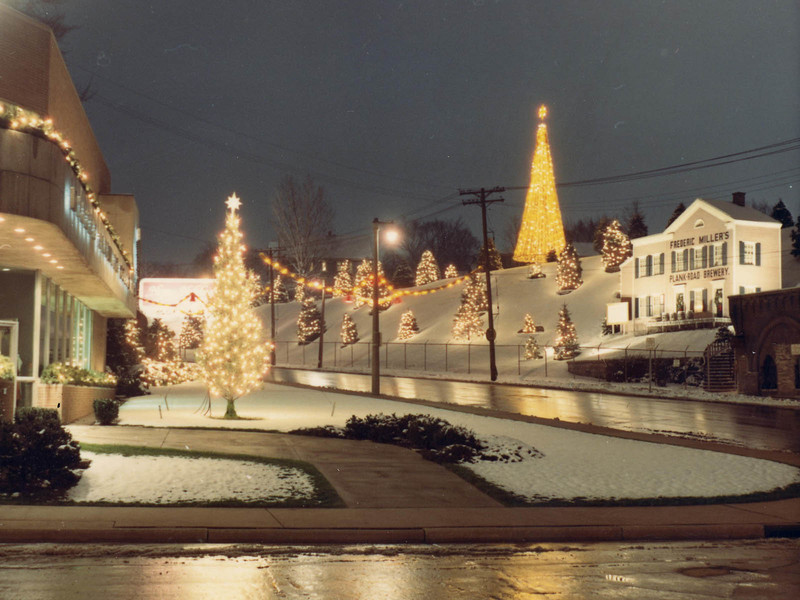The November 1917 bomb blast that killed nine policemen and a civilian woman at Milwaukee’s Central Police Station Downtown must be the city’s worst-kept secret.
Of course, the blast – which followed a series of confrontations between alleged anarchists and a group of Protestant missionaries on the street in Bay View, and which accounted for the worst death toll among American police in a single incident until Sept. 11, 2011 – was big news in its day.
But as time marched on, folks forgot. And even now that three books – including one by this writer – have been published on the subject, the story still seems a little hidden here at home.
The latest book, "Worse Than The Devil: Anarchists, Clarence Darrow and Justice in a Time of Terror," by attorney Dean Strang, has just been published in paperback by The University of Wisconsin Press.
While I was researching the story for my book, Strang and I spoke and shared information about the case, which grew bigger than Milwaukee, involving the likes of Clarence Darrow and Emma Goldman.
So I was pleased to see his book arrive and it was worth the wait. While Anna Passante’s self-titled work on the subject is mostly illustrations and mine focused more heavily on Italian immigration and Protestant missionaries working among them in Milwaukee, Strang delves deepest into the trial, appeal and law aspect.
Recently, I asked Strang about how he came to the subject, how he wrote about it and what he learned from it.
OnMilwaukee.com: Tell me about how you heard of the story and what drew you to dig into it.
Dean Strang: Since law school, I have been interested in – even fascinated by – Clarence Darrow. In the mid-1990s, one evening when I should have been working, I instead checked Westlaw out of curiosity to see whether Darrow ever appeared in the Wisconsin Supreme Court. He had, and this case popped up.
When I read the state Supreme Court’s opinion, I was drawn in immediately, both because the story was so interesting and because the underlying melee happened on the corner of the very block on which I then lived.
OMC: Can you explain what you mean when you say the case is a parable?
DS: Our system of criminal justice is human at every layer, and fragile for that very reason. It is especially fragile when it is asked to dispense justice to outsiders in times of great fear or nativism. During and immediately after World War I, we were in exactly such a moment, and the outsiders of the day were Italians and other European immigrants who often were associated with socialist or anarchist ideology, or with labor activism.
But these moments recur in American life: a generation later, the concern was eastern Europeans and others suspected of Communist sympathies. During the late 1950s and the Vietnam era, it was civil rights activists, yippies, the SDS, anti-war activists generally, and black nationalist movements; today and since Sept. 11, it is Arabic-speaking immigrants and others suspected of radical Islamist views. And, sadly, to some extent, African-Americans always have been and remain "outsiders" in the criminal justice system.
In this sense, the story of these 11 Italian immigrants provides timeless warnings. If there is a moral, it is that we should seek to administer justice with greater humility. A good start would be rules, and a corresponding public attitude, that place less emphasis on finality and claim less certainty that the conclusion of a legal case establishes the truth.
OMC: So there are lessons in these events for us looking back in the 21st century.
DS: Very much so.
OMC: Did the fact that there were a couple books on the subject already affect how you approached it?
DS: I am familiar, of course, with both books. Yours is a wonderful exploration of the story from an ethnographic perspective, and your research into the lives of some of the 11 after they were deported to Italy was fascinating. Anna’s is a local recounting that draws on much of the oral history of the neighborhood. Both are very valuable and cover different areas than my book.
As you correctly note, mine is a work of legal history and one that focuses on the human frailty of our justice system, as this case revealed those frailties in the police, the prosecutors, the defense lawyers and the courts. My book also gives some attention to the role of the mainstream media, then and now, in perpetuating myths about the justice system and biases against outsiders and outliers.
OMC: Finally, what do you think of historian Paul Avrich's opinion that Mario Buda and Carlo Valdinoci (who were implicated in other major bombings at the time: one in 1919 at the Washington D.C. home of Attorney General A. Mitchell Palmer and one in 1920 on Wall Street in New York City) who was behind the bomb? Do you believe it?
DS: You know, he may be right – but he sure did not document or footnote his conclusion convincingly. While I may be wrong, I got the sense that he may have been relying on personal interviews in the 1960s and 1970’s with aging anarchists who either wished not to be named on that topic, or who for whatever reason Avrich did not want to name.
For whatever reason, Prof. Avrich, who was an eminent historian of anarchism in this country – as well as an historian of Russia and the Soviet Union – did not leave the well-marked trail on this point that scholars ordinarily do. So I do not know whether he was right. I do know that his theory is plausible.
Born in Brooklyn, N.Y., where he lived until he was 17, Bobby received his BA-Mass Communications from UWM in 1989 and has lived in Walker's Point, Bay View, Enderis Park, South Milwaukee and on the East Side.
He has published three non-fiction books in Italy – including one about an event in Milwaukee history, which was published in the U.S. in autumn 2010. Four more books, all about Milwaukee, have been published by The History Press.
With his most recent band, The Yell Leaders, Bobby released four LPs and had a songs featured in episodes of TV's "Party of Five" and "Dawson's Creek," and films in Japan, South America and the U.S. The Yell Leaders were named the best unsigned band in their region by VH-1 as part of its Rock Across America 1998 Tour. Most recently, the band contributed tracks to a UK vinyl/CD tribute to the Redskins and collaborated on a track with Italian novelist Enrico Remmert.
He's produced three installments of the "OMCD" series of local music compilations for OnMilwaukee.com and in 2007 produced a CD of Italian music and poetry.
In 2005, he was awarded the City of Asti's (Italy) Journalism Prize for his work focusing on that area. He has also won awards from the Milwaukee Press Club.
He has be heard on 88Nine Radio Milwaukee talking about his "Urban Spelunking" series of stories, in that station's most popular podcast.







